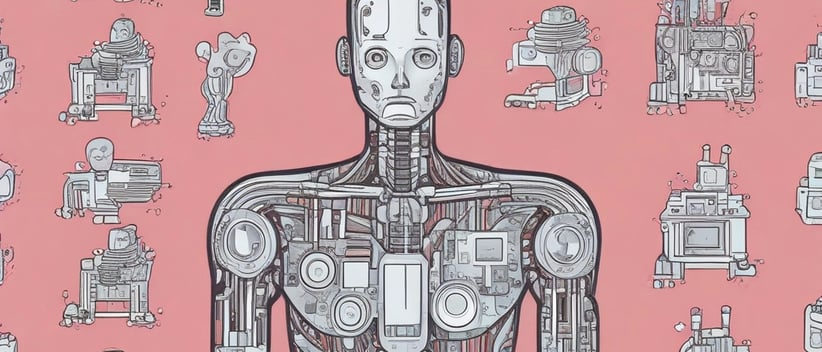Understanding AI: Just How Does AI Learn? (2/5)
Core Concepts of AI: Part 2 - Demystifying Machine Learning and Algorithms
AI BASICS
Lex Jimenez
12/10/20242 min read


Welcome back to our Understanding AI series! In Part 1, we covered the core concepts of AI and laid the groundwork for understanding what Artificial Intelligence is. Now, let’s dive deeper and explore how AI learns to perform the tasks it’s designed for. This blog will break down the basics of machine learning and algorithms in a way that’s easy to understand, even if you’re just starting out.
How Does AI Learn?
At its core, AI learns by identifying patterns in data. Think of it as teaching a child to recognize an apple. You show the child several pictures of apples (data), and over time, they learn to identify what makes an apple unique. AI works similarly but at a much larger and faster scale.
The Role of Machine Learning
Machine Learning (ML) is the process that allows AI to learn from data without being explicitly programmed. Instead of writing rules for every possible scenario, we give the AI examples and let it figure out the rules itself. Here’s a simple analogy:
Traditional Programming: You write instructions like, “If the object is red and round, it’s an apple.”
Machine Learning: You feed the system thousands of images labeled as “apple” or “not an apple.” The system studies the data and learns what makes an apple based on the patterns.
3 Main Types of Artificial Intelligence (AI)
1. Supervised Learning
How It Works: The AI is trained on labeled data. For example, if you want AI to recognize cats, you provide it with pictures of cats labeled as “cat” and non-cats labeled as “not a cat.”
Real-Life Example: Spam email detection. AI learns from labeled emails marked as “spam” or “not spam.”
2. Unsupervised Learning
How It Works: The AI is given unlabeled data and asked to find patterns or groupings on its own.
Real-Life Example: Customer segmentation. AI groups customers based on purchasing behavior without knowing their demographics.
3. Reinforcement Learning
How It Works: The AI learns by trial and error, receiving rewards for correct actions and penalties for mistakes.
Real-Life Example: AI playing chess. It learns the best strategies through repeated games and outcomes.
What Are Algorithms?
An algorithm is simply a set of instructions or rules the AI follows to process data and make decisions. Think of it like a recipe:
• Ingredients = Data
• Steps = Algorithm
The algorithm determines how the AI learns from the data and applies that learning to new situations.
How AI Applies What It Learns
Once AI has been trained using machine learning and algorithms, it can:
• Recognize patterns: Like identifying faces in photos.
• Make predictions: Like forecasting the weather.
• Improve over time: By analyzing new data and refining its approach.
This ability to “learn” is what makes AI so powerful—it adapts and evolves without needing new code for every task.
Why Does This Matter to You?
Understanding how AI learns helps you see its potential in real-world applications. From personalized recommendations on Netflix to smart assistants like Siri, machine learning is what powers these innovations. The more you know about how it works, the better you can use AI tools in your everyday life.Trick Insights for Newcomers
Takeaways for Beginners
1. AI learns by analyzing patterns in data.
2. Machine learning is the backbone of AI learning, with three main types: supervised, unsupervised, and reinforcement learning.
3. Algorithms guide how AI processes data and learns.
